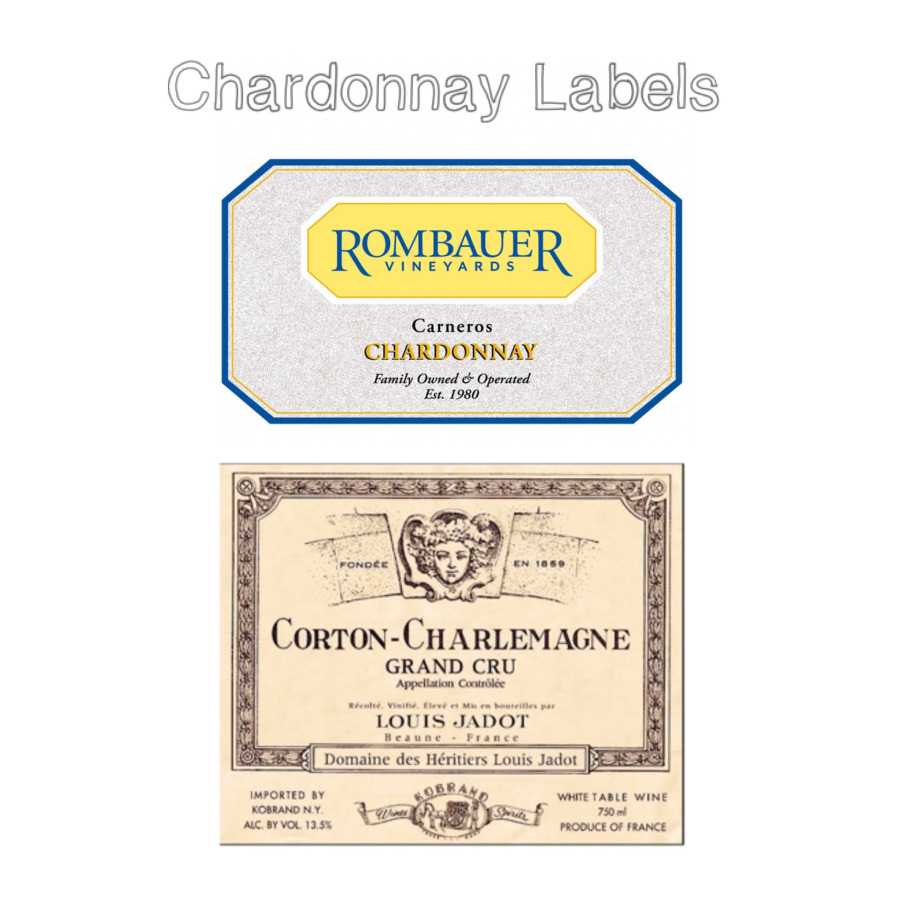Wine Labels: region vs variety
There are two main types of wine labels: by variety (New World) and by region (Old World).
First of all, the New World consists of essentially anywhere that was a colony (USA, Chile, Argentina, South Africa, Australia, New Zealand) and the Old World consists of European countries (France, Italy, Spain, Germany).
Regardless of the type of label every one will provide:
-
Producer: who made the wine (Rombauer/Louis Jadot)
-
ABV: Alcohol by Volume
-
Vintage: the year the grapes were harvested
-
Region: where the wine is from
-
Apellation/Variety
The image below consists of a label from both California and France to compare the two styles. The Rombauer label is an example of labeling by variety and the Louis Jadot label is an example of labeling by region.
Both of these wine labels indicate a wine made from 85-100% Chardonnay grapes. The main difference between these wine labels is that Rombauer lists the grape variety/ies that you are drinking and on the Louis Jadot label they are no where to be found. Europe has based a lot of their wine laws on history and tradition. During the middle ages wine growers and monks discovered and experimented with which grape varieties grew best in which regions. For example Corton-Charlemagne is an appellation within Burgundy. Burgundy only allows Pinot Noir, Chardonnay, Aligote, and Gamay to be grown. In New World regions they do not have these restrictions. They are free to grow whichever grape variety they choose given some do grow better than others in particular areas. For example California produces everything from Pinot Grigio, Sauvignon Blanc, Chardonnay, Riesling, Pinot Noir, Merlot, Sangiovese, Cabernet Franc, and Cabernet Sauvignon among others. The best way to learn about these regions is by researching them and learning about the grape varieties allowed and methods used to produce the wine.

